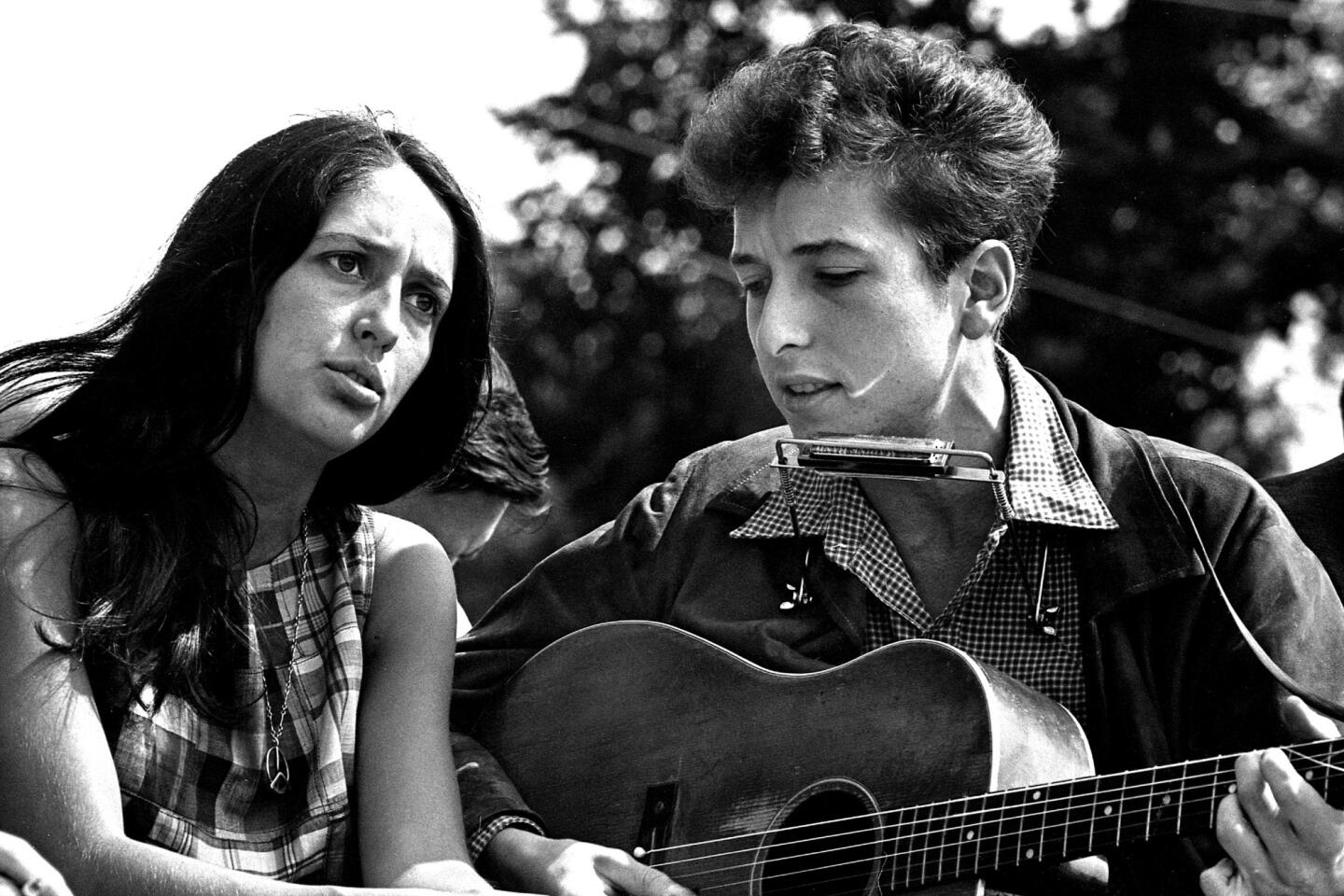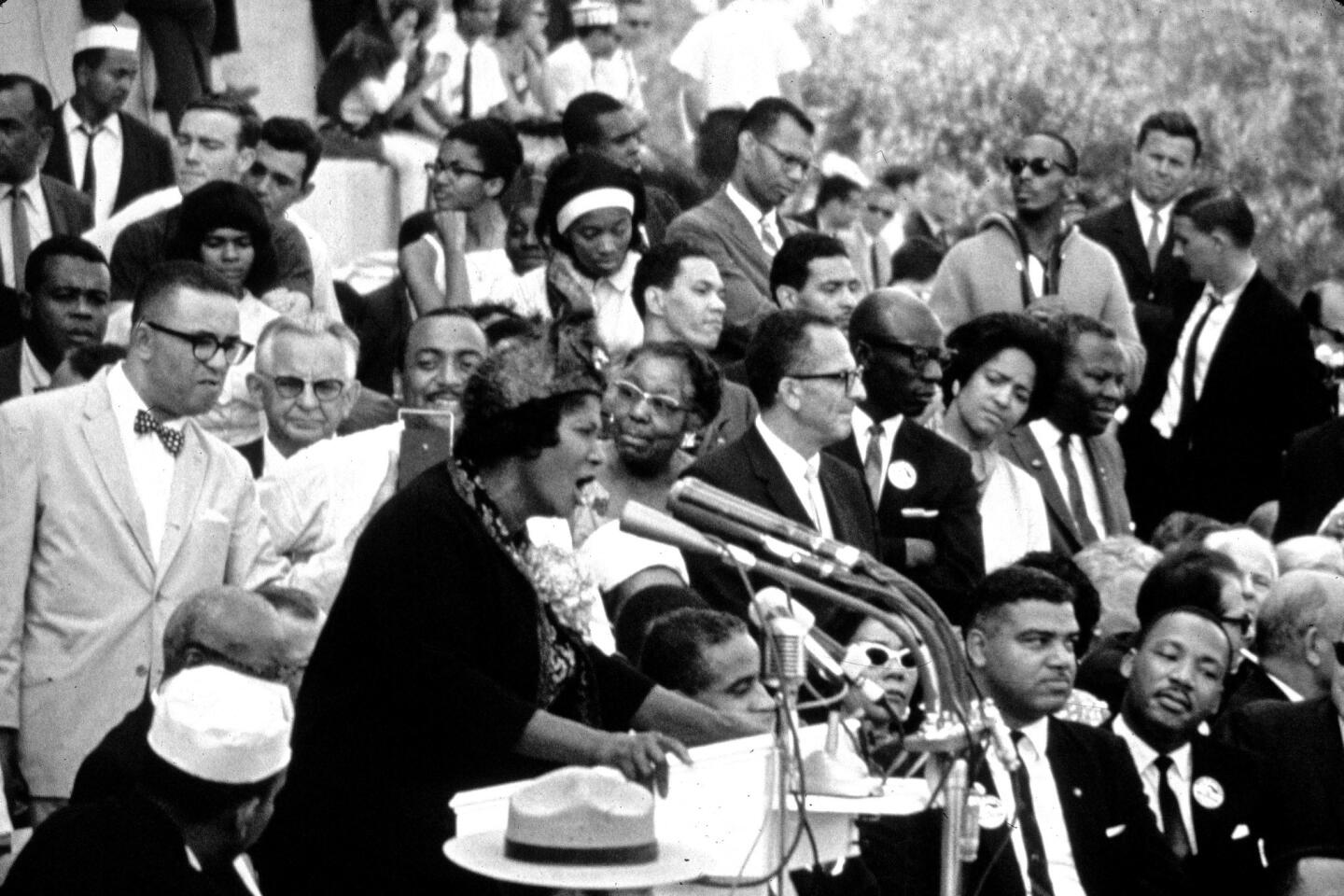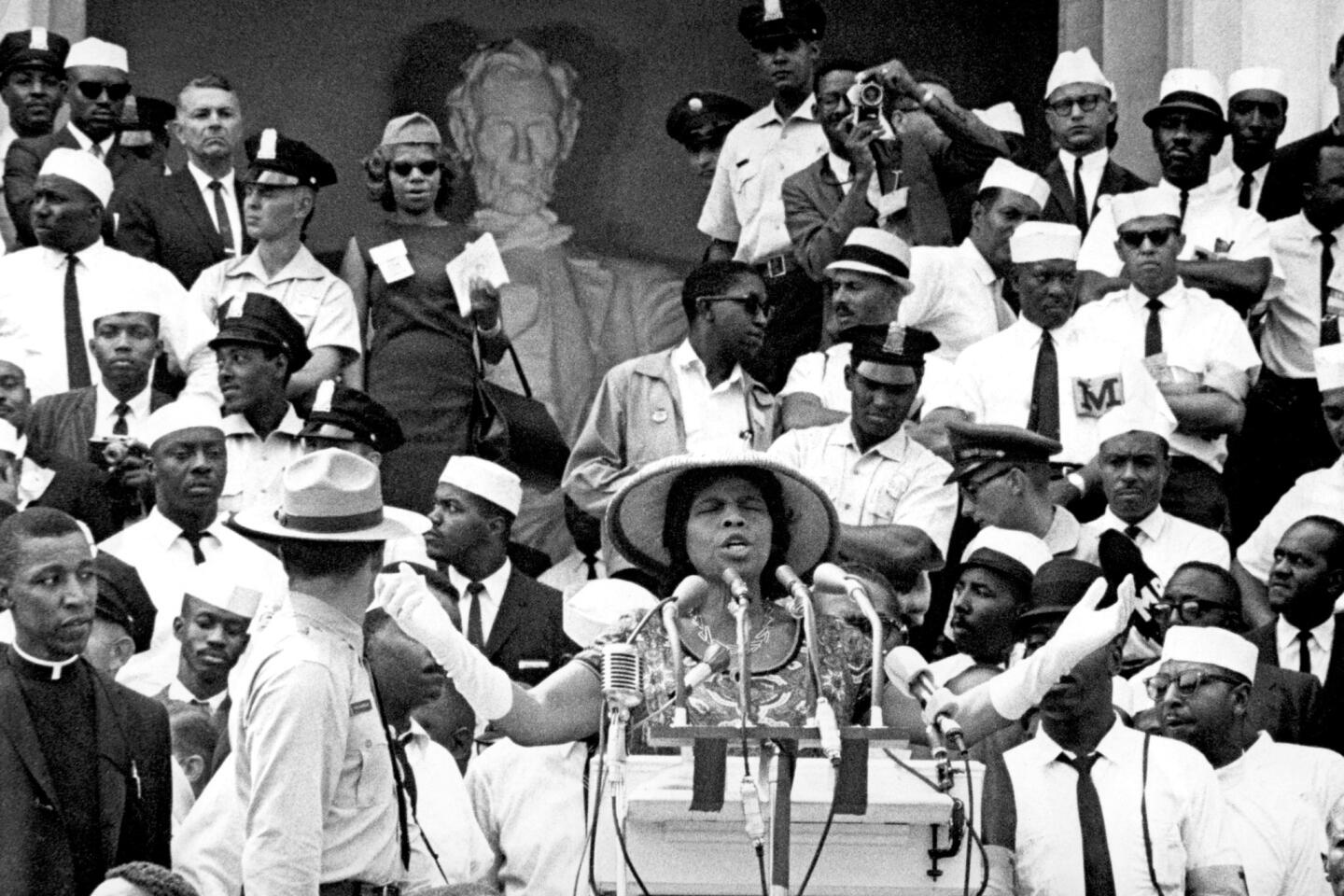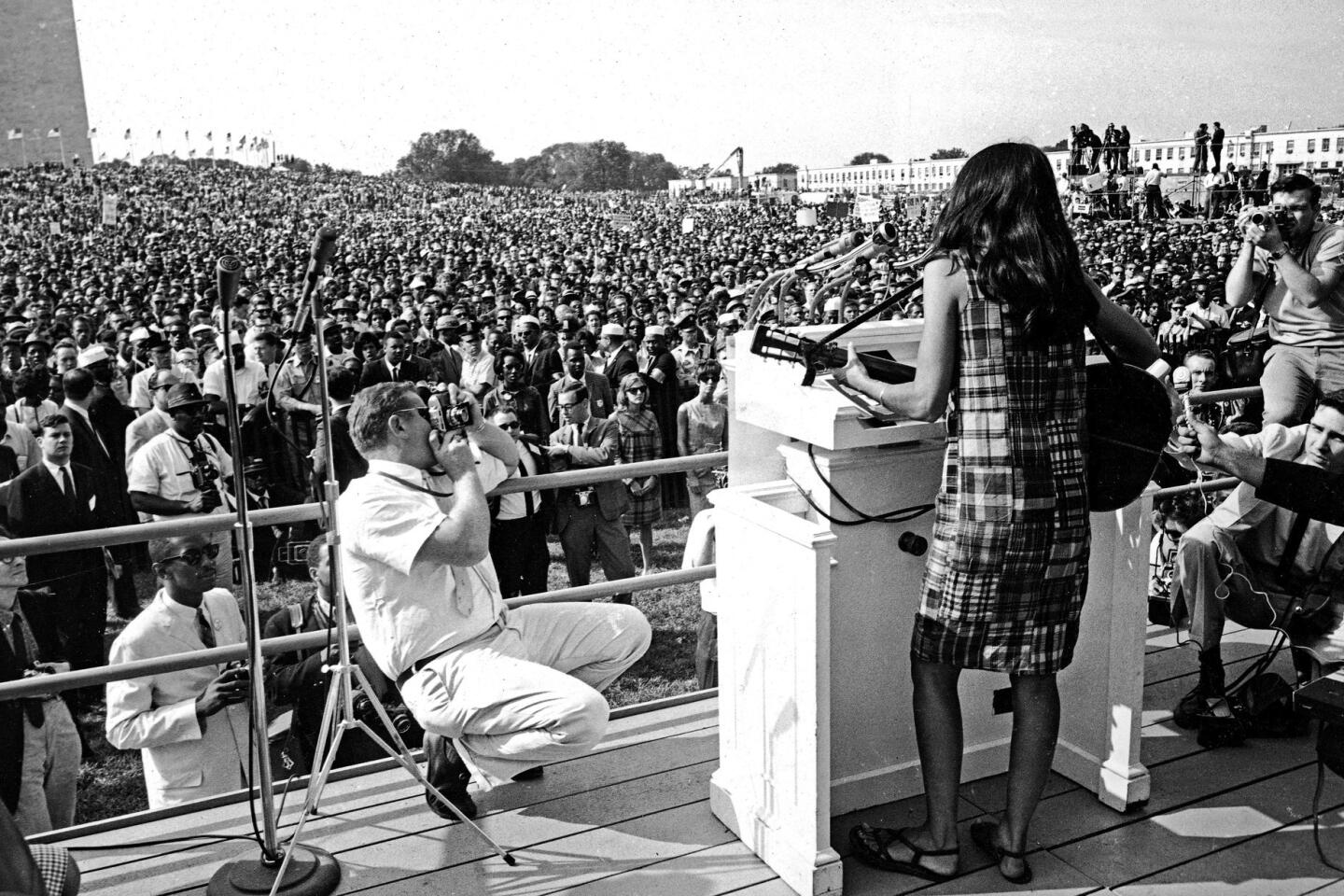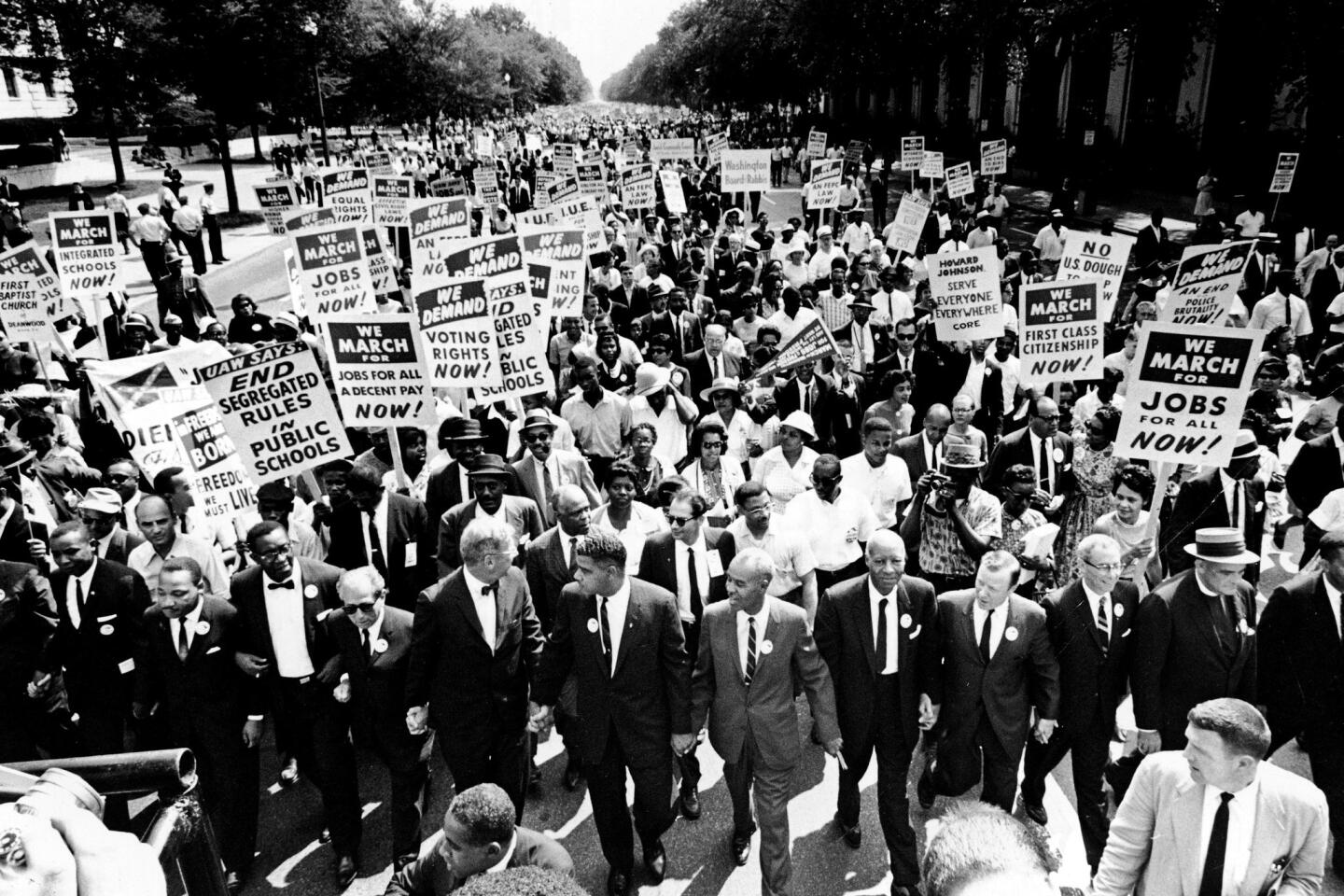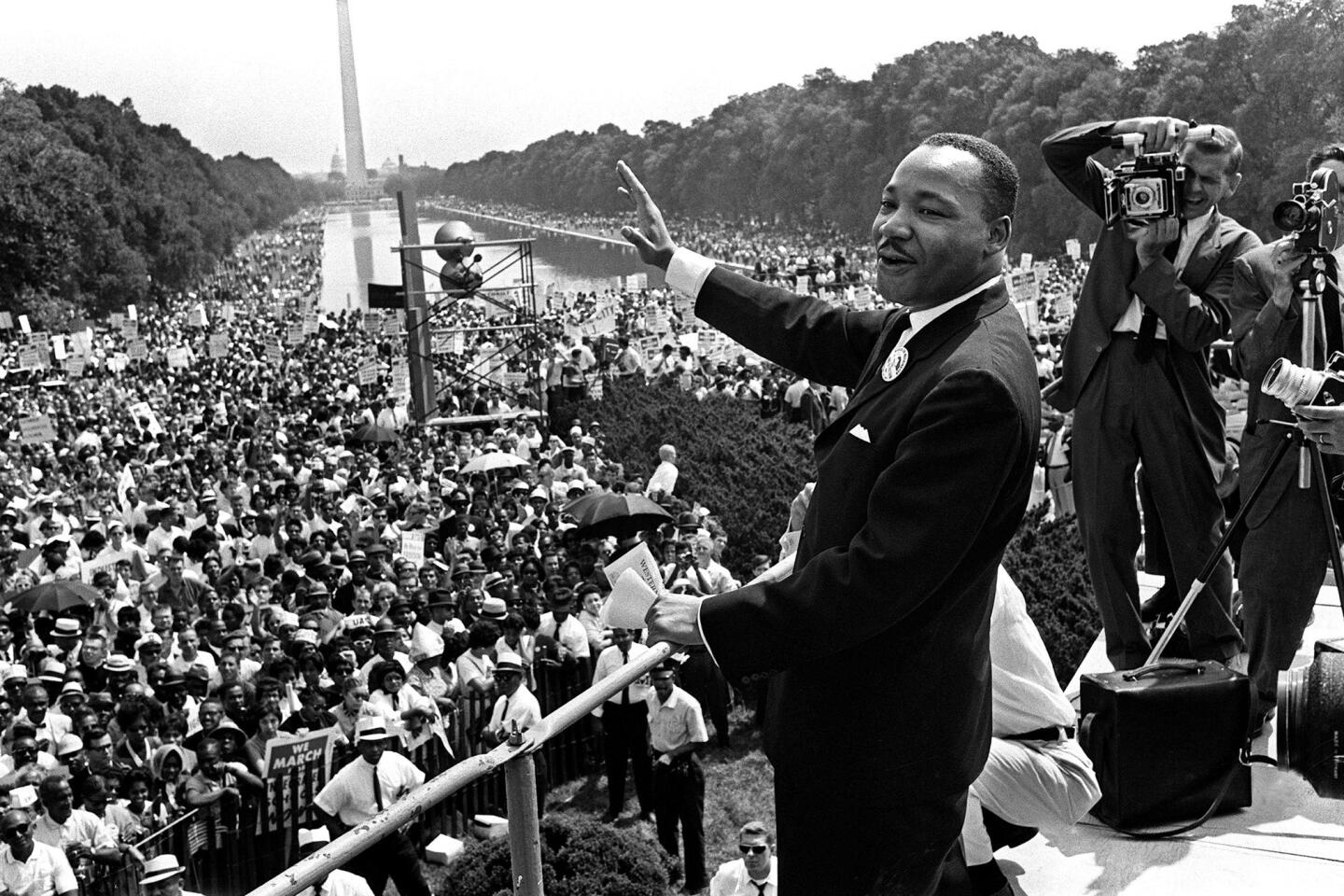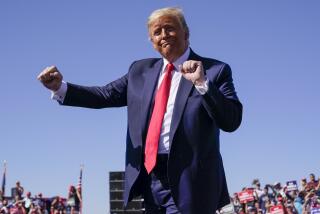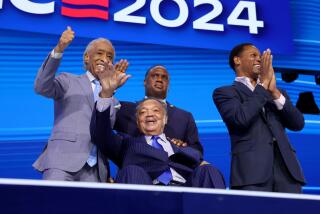March on Washington set the standard for songs of protest
The March on Washington for Jobs and Freedom 50 years ago was not only a galvanizing moment for African Americans and civil rights. It was also a watershed moment in popular music.
Before that hot summer day, pop music was mostly about a catchy tune and a memorable lyric. Since then, it became commonplace for songs with a social message to race up the sales charts. The Beatles and James Brown did it in the â60s, and urban rappers, country singers and alternative-rock bands continue speaking out today.
That was something new on Aug. 28, 1963. Actor and singer Harry Belafonte lined up black musicians Mahalia Jackson, Odetta and Marian Anderson for the concert on the National Mall at the end of the march, but he also included white folk artists Bob Dylan, Joan Baez and Peter, Paul and Mary.
INTERACTIVE: March on Washington | Musical Highlights
Malcolm X and some others had argued against including white performers. Belafonte ignored them, saying it was not in keeping with the Rev. Martin Luther King Jr.âs message of inclusion.
âNothing that made up the American mosaic was not represented,â said Belafonte, now 86. âLooking out at that sea of humanity ... we were looking at what Dr. King was describing as the dream.â
Gospel music had long played a part in the civil rights movement, with âWe Shall Overcomeâ serving as the unofficial anthem of the movement. And folk music, at that time, was at the peak of its popularity.
Between Elvis Presleyâs induction into the Army in 1958 and the arrival of the Beatles and the British Invasion in 1964, folk music exerted a powerful hold on radio and television through appearances and recordings by the Kingston Trio; Peter, Paul and Mary; Baez; the New Christy Minstrels; Trini Lopez and others.
What came into prominence at the time of the march were songs of protest and social consciousness.
PHOTOS: Music and the March on Washington
âThere was a profound shift going on in the country,â said Peter Yarrow, 75, of Peter, Paul and Mary. âThe people who were running record companies were deeply committed to the idea that music was part of an awakening that was happening in America. They were committed to telling the story ⌠to people in ways that inspired them not only to think differently but to act differently.â
Perhaps no performer embodied this shift more than a young folk singer from Minnesota: Bob Dylan. He was invited to sing at the march despite not being widely known outside folk circles at the time.
âHe brought the content,â Belafonte said. âHis artistic command was necessary on that platform.â
Belafonte said the importance of music in galvanizing support for the movement cannot be overestimated.
âArtists are the gatekeepers of truth,â he said. âIn every instance where I have been exposed to struggle, songs were an intricate part of the day.â Though a huge star at the time, Belafonte declined to take the spotlight for himself, singing only in the group efforts with other singers.
Music at the March on Washington was anything but mere entertainment for the hundreds of thousands of onlookers.
PHOTOS: A look back at the March on Washington
âMusic was the lifeblood of the civil rights movement,â said Robert Santelli, executive director of the Grammy Museum. âWithout the music, which gave the movement its courage and its soul, I donât know whether the civil rights movement could have succeeded.
When you are facing a line of armed police, fire hoses and German shepherds baring their teeth, you have to muster courage, and oftentimes it was through music that they did that.â
Santelli noted that music has long been used to express protest.
âWhen you look at music and its role in American history,â Santelli said, âyou can go all the way back to pre-Revolutionary War days, and you find that radicals in Philadelphia, Boston and New York were selling broadsides, which put new lyrics to English beer-drinking songs. This was a way to get the word out, to get your political slant promoted.â
But there are times, he said, âwhen it becomes more important, times when it becomes more prominent.â
PHOTOS: A guide to the current top pop ensembles
That was certainly the case with the March on Washington, where music also played a role behind the scenes.
Today the march is largely remembered as the day King gave his celebrated âI Have a Dreamâ speech from the steps of the Lincoln Memorial. Historians have long known that that portion of the talk was not included in the speech as written, but that King added the âDreamâ section, which heâd voiced in previous talks, at the spur of the moment.
Whatâs less well-known is what prompted King to depart from his text at that moment. Belafonte, who was on the platform that day, recalls King taking a pause during which gospel singer Mahalia Jackson shouted, âTell them about the dream, doctor!,â at which point he extemporized one of the most celebrated speeches in American history.
As civil rights activist Roger Wilkins later put it: âIf Mahalia Jackson, with that voice, told you to do something, you did it.â
Twitter: @RandyLewis2
More to Read
The biggest entertainment stories
Get our big stories about Hollywood, film, television, music, arts, culture and more right in your inbox as soon as they publish.
You may occasionally receive promotional content from the Los Angeles Times.
